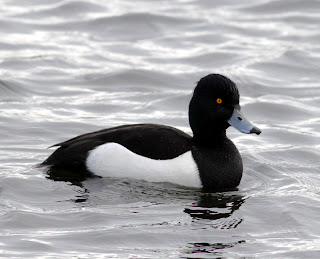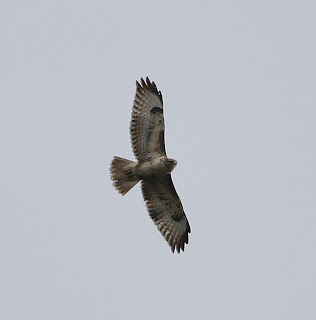It rained most of the morning, but as promised by Diane on BBC Look North West the situation brightened towards midday. So I grabbed an early lunch then set out towards my local patches of Pilling Lane Ends, Conder Green and Bank End because there was a tide due about 1pm even though it wouldn’t be high enough to bring a lot in close.
There wasn’t much doing at Lane Ends itself, apart from the resident two Reed Warblers, singing from suitable distances apart. I reached Pilling Water without opening my notebook, waiting until I reached the stile to jot down just a hovering Kestrel and the 3 Little Egrets I’d seen from some distance away, conspicuously white against the green marsh.
At Pilling Water I settled down on the still wet grass and surveyed the marsh. There had been an obvious influx of Little Egrets, and I counted 7 of them, one towards Fluke, three along the ditch and three out on the water’s edge where amongst the Black-headed Gulls was an adult Mediterranean Gull again. Wader wise I counted 600 Curlew, 14 Dunlin, 3 Ringed Plover, 2 Common Sandpipers and 1 Greenshank, plus 2 Grey Herons, waders of sorts.


Also on the water’s edge I noted 5 Eider duck and 5 roosting Cormorant, plus Lapwings, but only about 40 today. I’ve been looking out for Wheatears again on the Wheatear rocks and today there was one, a single juvenile bird that went out on the marsh as I approached. Other passerines came in at 5 Linnets and 4 Skylark, and hirundines at 90 Swallow and 12 House Martin over the Fluke Hall Lane crop fields, plus 8 Swifts.
I spent a while at Conder Green, enough time to log the Ruff that has been around for a week or two now. Ruff are good that way, with individuals tending to have distinct features whereby it is often possible to say a bird is the same one as on a previous occasion. 4 Common Sandpipers, 30 Redshank, 1 Spotted Redshank, 1 Little Ringed Plover, 90 Lapwing, 1 Great-crested Grebe and 14 Oystercatchers were the highlights of my short stay.

Each time I have been to Bank End lately it resembled Piccadilly Circus with the comings and goings to the parachuting centre, but today it was quiet and I had the road to myself with alongside it 6 Pied Wagtail, 8 Tree Sparrow, 8 Linnet and 2 Meadow Pipit with low over the marsh 15 Swallow, 12 Swift and 10 House Martin. I watched a tatty looking Kestrel obviously in the stages of full moult as it struggled to hover above the road, periodically taking time out where it rested on the embankment. It looked better on the ground.


So once again I fitted one in between the showers and the grot, but how I wish we had summer back.






























































.jpg)












